1
Alfred Crocker (A.C.) Leighton's Drawing Supplies20th Century
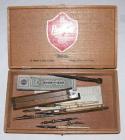 Credits:
Credits:The Leighton Foundation Permanent Collection (Artifact)
2
Images from Alfred Crocker ( A.C.) Leighton's Sketchbook20th Century
Western Canada
 Credits:
Credits:The Leighton Foundation Permanent Collection (Artwork)
3
"Untitled" Pastel Drawing by Alfred Crocker (A.C.) Leighton20th Century, Circa 1955
Unknown
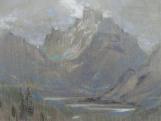 Credits:
Credits:The Leighton Foundation Permanent Collection (Artwork)
Glenbow Archives RCT-172 (Recording)
4
Alfred Crocker (A.C.) Leighton's Watercolours Palette and Brushes20th Century
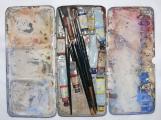 Credits:
Credits:The Leighton Foundation Permanent Collection (Artifact)
5
"Mount Assinaboine, Lake Magog" Watercolour Painting by Alfred Crocker (A.C.) Leighton20th Century, Circa 1925
Mount Assiniboine, British Columbia, Canada
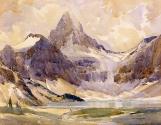 Credits:
Credits:Canadian Pacific Archives (Artwork)
6
Alfred Crocker (A.C.) Leighton's Oil Paint Palette20th Century
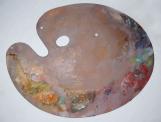 Credits:
Credits:The Leighton Foundation Permanent Collection (Artifact)
7
Oil Painting in Progress by Alfred Crocker (A.C.) Leighton20th Century
Rocky Mountains, Western Canada
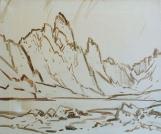 Credits:
Credits:The Leighton Foundation Permanent Collection (Artwork)
Glenbow Archives RCT-172 (Recording)
Leighton Staff (Text)
8
"Mount Skoki" Oil Painting by Alfred Crocker (A.C.) Leighton20th Century, Circa 1935
Rocky Mountains, Western Canada
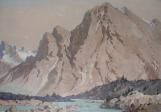 Credits:
Credits:The Leighton Foundation Permanent Collection (Artwork)
Glenbow Archives RCT-172 (Recording)
9
The Artistic Process of Alfred Cocker (A.C.) LeightonFor A.C. Leighton, to create a finished piece of art-which you see on the walls around you-entailed more than merely looking at a landscape and applying paint to the canvas.
His inspiration came from the world surrounding him; he listened to music, read books and travelled into the mountains. Like many artists who enjoy working plein air-or, 'in the open air'-Leighton created sketches in various mediums to capture a fleeting moment in the landscape. To effectively do this, landscape artists often used the black Claude Glass (below) which reflects the landscape in simplified shapes and colours. Some plein air sketches evolved into finished works unto themselves while others acted as visual references for larger scale oil paintings completed later, in the studio.
We know that Leighton also used photographs as references for his paintings. While some photographs in our collection resemble his paintings, the two in this display have been edited by Leighton to enhance his vision while working from them. His collection of reference images include the large box of magazine and newspaper clippings that you see below, photographs of prairie and mountain landscapes and photographs of people from First Nations chiefs to cowboys and farmwives.
Upon completing any sketches and after tinkering with the composition, the artist would begin to create what would potentially become a finished piece-in this case, oil paint on canvas. Below you can see the under painting of a landscape in oil by A.C. Leighton which he may not have finished for various reasons. Perhaps, because Leighton was very critical of his own work, he did not may complete this painting because he was unhappy with the way it was turning out.
However, one must be critical of oneself to find success and, as we know, Leighton was successful in his painting. Over his career most of his works were exhibited in many shows across North America and the United Kingdom and he sold many more, leaving his mark on Albertan and Canadian art history.